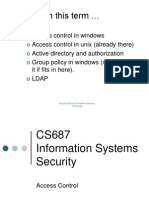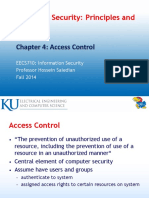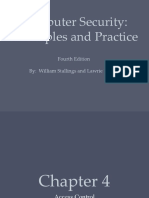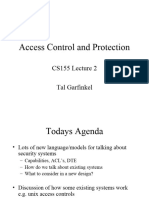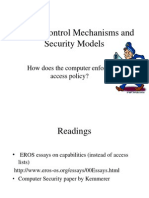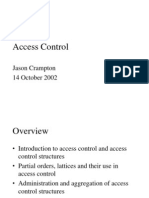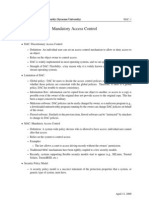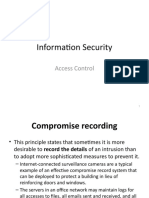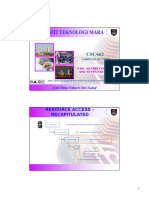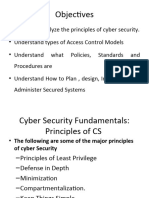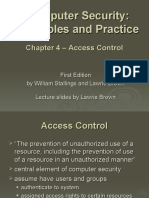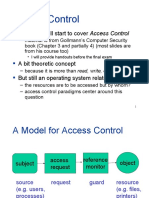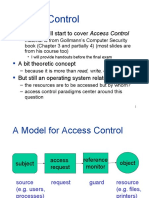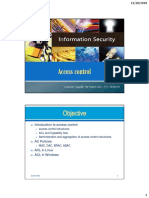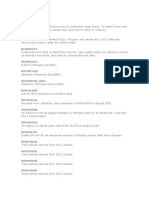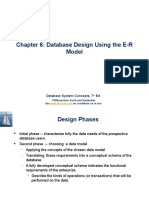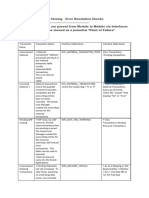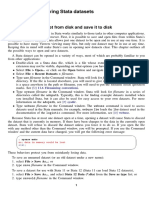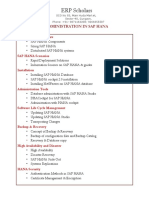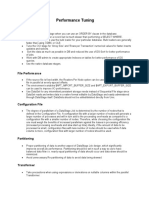0% found this document useful (0 votes)
25 views50 pages04 Access Control
The document discusses access control in cybersecurity, focusing on its goals, definitions, and various models such as Discretionary Access Control (DAC), Mandatory Access Control (MAC), and Role-Based Access Control (RBAC). It explains the importance of regulating access to information and resources to maintain confidentiality and integrity, detailing concepts like access control lists and matrices. Additionally, it covers the organization of access control functions and the implications of role hierarchies within RBAC.
Uploaded by
lcdp alcantraCopyright
© © All Rights Reserved
We take content rights seriously. If you suspect this is your content, claim it here.
Available Formats
Download as PDF, TXT or read online on Scribd
0% found this document useful (0 votes)
25 views50 pages04 Access Control
The document discusses access control in cybersecurity, focusing on its goals, definitions, and various models such as Discretionary Access Control (DAC), Mandatory Access Control (MAC), and Role-Based Access Control (RBAC). It explains the importance of regulating access to information and resources to maintain confidentiality and integrity, detailing concepts like access control lists and matrices. Additionally, it covers the organization of access control functions and the implications of role hierarchies within RBAC.
Uploaded by
lcdp alcantraCopyright
© © All Rights Reserved
We take content rights seriously. If you suspect this is your content, claim it here.
Available Formats
Download as PDF, TXT or read online on Scribd
/ 50




